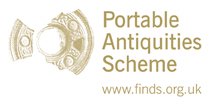Server check!
You are on the training database
Spearheads
Spearheads were mostly made in two-piece moulds which have been found in Ireland and the Highlands. During the Early Bronze Age soft stone moulds were used but in the late Bronze Age clay moulds became more popular. There is no evidence to indicate that bronze moulds were used to cast spearheads. After casting a spearhead would have been finished, hammered and occasionally decorated. The remains of hafts are occasionally recovered inside spearheads and they indicate that hafts were mostly made of ash and pinewood. Looped spearheads were probably secured by a cord or leather thong. Pegged spearheads would have been pegged to the spear haft by bronze or wooden pegs. The variation of spearhead size indicates they may have been used for different purposes. For example smaller spearheads may have been thrown while larger ones may have been used as thrusting weapons. Evidence suggests that they were used in warfare and hunting. Some large decorative and barbed spearheads may have been used in ceremonies as appear to be too large and valuable for fighting or hunting.
Tanged Spearhead
Example = BM WG 2073
http://www.britishmuseum.org/research/search_the_collection_database/search_object_details.aspx?objectid=808203&partid=1
Date = 1700-1500 BC
Distribution = All over England
Comment = Tanged spearheads are the earliest types of spearhead in Britain. They have a thin triangular shaped blade and an ovate (egg shaped) midrib which has steps or grooves either side. The tang of the spearhead has a rivet hole at the base of the blade.
Kite Bladed Spearhead
Example =
Date = 1500-1200 BC
Distribution = Mainly Ireland with a scatter in Britain
Comment = Obviously Kite bladed spearheads have blades which are in the shape of kites. They can also have grooves or ribs converging on a midrib. They have two loops, which are lozenge shaped, half way between the base of the blade and the mouth of the socket.
Side-Looped Spearhead
Example = LIN-0DDC06, SOM-D83264,
Date = 1500-900 BC
Distribution = Thames valley, Wessex and East Anglia
Comment = Side looped spearheads vary in length from 90-210 mm and have a leaf shaped blade. The section of the blade is either circular or lozenge shaped and some side looped spearheads are decorated. The loops are either string loops or lozenge-shaped or a combination of the two styles. The side loops on these spearheads would not have secured the spearhead to the haft as securely as the basal loops featured on other spearheads. This suggests that the side loops had another function.
Basal Looped Spearhead
Example = SF-54C472, HAMP-FE1C52
Date = 1800-1500 BC
Distribution = southern Britain mainly the Thames valley, Wessex and East Anglia
Comment = Basal looped spearheads, as the name suggests, feature loops at the base of the spearhead which were probably used for fixing the spearhead to the haft. There are two main types. Firstly those with leaf-shaped blades which are about 240 mm long with midribs with lozenge shaped sections. Secondly there are basal looped spearheads with triangular blades which can be up to 470mm long. The loops are narrow and some also have pegholes.
Rapier Bladed Spearheads
Example = 1903.6-23.1 http://www.britishmuseum.org/research/search_the_collection_database/search_object_details.aspx?objectid=808208&partid=1
Date = 1400-1300 BC
Distribution = a few are known from Ireland and England
Comment = Rapier bladed spearheads are incredibly rare and mimic rapiers in their shape. They have loops near the base and also two studs which are either made of gold or covered in gold foil. These spearheads feature pointille and incision decoration.
Pegged Spearhead
Example = SF10116, SF3753
Date = 1150-600 BC
Distribution = Thames Valley, Cambridge Fens and east Midlands.
Comment = Pegged spearheads were made in the Late Bronze Age and have a leaf shaped blade, pegholes and a circular midrib section. There is a great deal of variation in this type of spearhead and they vary in length from 100mm-400mm. Some pegged spearheads are decorated and the socket usually extends half to three quarter of the length of the spearhead.
Barbed Spearhead
Example = DEV-2B4697
Date = 900-700 BC
Distribution = southern Britain particularly the Thames valley
Comment = Barbed spearheads were made in the Late Bronze Age and have wide blades and an ovate (egg shaped) midrib section. They can be divided into four Groups I-IV and may have developed form hollow bladed spearheads and triangular bladed spearheads. They are also barbed which means that there are two protrusions beneath the blade which could have caused a great deal of damage. It is a possibility that these spearheads were used as harpoons to kill fish however this theory may not be correct as the spearheads are too large for normal sized fish although they could have been used for hunting large fish such as sturgeon. Some of the spearheads however are unlikely to have had a practical use as they are thinly cast and so perhaps held a ceremonial purpose or were votive offerings. A great number have been found in watery deposits which supports the idea they were some sort of offering.
References
Ehrenberg, M., R. (1977). Bronze Age Spearheads from Berkshire, Buckinghamshire and Oxford. British Archaeological Reports 34
Davis, R. (2006). Basal- Looped Spearheads: Typology, Chronology, Context and use. BAR international series 1945
O’Connor, B. (1980) Cross Channel Relations in the Later Bronze Age. Oxford: British Archaeological Reports S91
Tubular Ferrule
Example = LVPL2212, NARC2585
Date = 1150-800 BC
Distribution = Throughout Britain
Comment = A ferrule would have been fitted to the base of the shaft of a spear possibly to balance the weight and to protect the bottom of the spear from damage. More spearheads than ferrule have been discovered so perhaps their use was not particularly popular. Tubular ferrule are tube shaped and some are open at both ends.
References
- Ehrenberg, M., R. (1977). Bronze Age Spearheads from Berkshire, Buckinghamshire and Oxford. British Archaeological Reports 34


